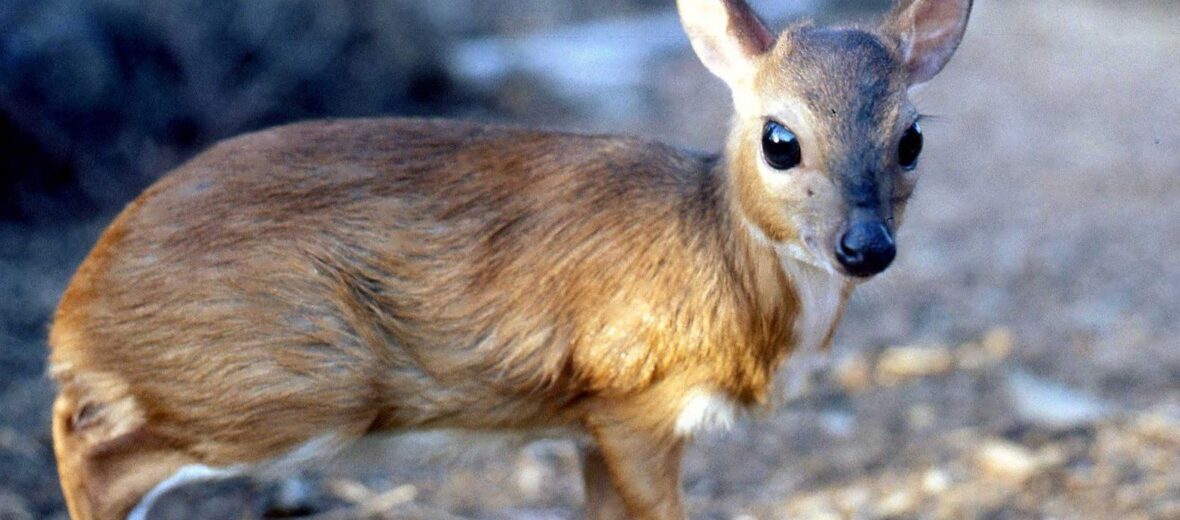
Say hello to the world’s smallest known antelope, the royal antelope. Swedish zoologist Carl Linnaeus first described these tiny critters in 1758. With hind legs that are twice as long as their forelegs, these diminutive creatures have been called “king of the hares” by the local tribal people. And, in a twist of evolution, the females are larger than males. Fortunately they are listed as Least Concern by the IUCN.
First the Stats…
Scientific name: Neotragus pygmaeus
Weight: Up to 5 lbs.
Length: Up to 20 inches
Height: Up to 12 inches
Lifespan: Up to 6.8 years
Now on to the Facts!
1.) Royal antelopes can be found from the Kounounkan Massif in southwestern Guinea through Sierra Leone, Côte d’Ivoire, Liberia, to the Volta River, in Ghana.
2.) They prefer forest fringes, lowland forests, and secondary forests with an abundance of dense and fresh plant growth.
3.) These antelopes are nocturnal (active at night).
4.) Being solitary and shy, they tend to live alone or in pairs.
5.) Antelopes are herbivores (eat plant matter) and these little critters are no exception. They consume grass, buds, leaves, weeds, shoots, flowers, fruit, and fungi.
But wait, there’s more on the royal antelope!
6.) The royal antelope is monogamous (mates for life).
7.) Females birth a single calf that weighs up to a mere 10 ounces.
Did you know…?
Their strong hind legs allow them the ability to jump up to 9.2 feet forward, in a single jump, with an average height of up to 22 inches off the ground.
8.) Only the males have horns.
9.) Calves are weened at 2 months of age and are sexually mature by 6 months.
10.) There are an estimated 62,000 specimens in the wild, to date, but their numbers are decreasing due to habitat destruction, hunting, and climate change.
Now a Short Royal Antelope Video!
Be sure to share & comment below! Also, check out the Critter Science YouTube channel. Videos added frequently!
Want to suggest a critter for me to write about? Let me know here.



